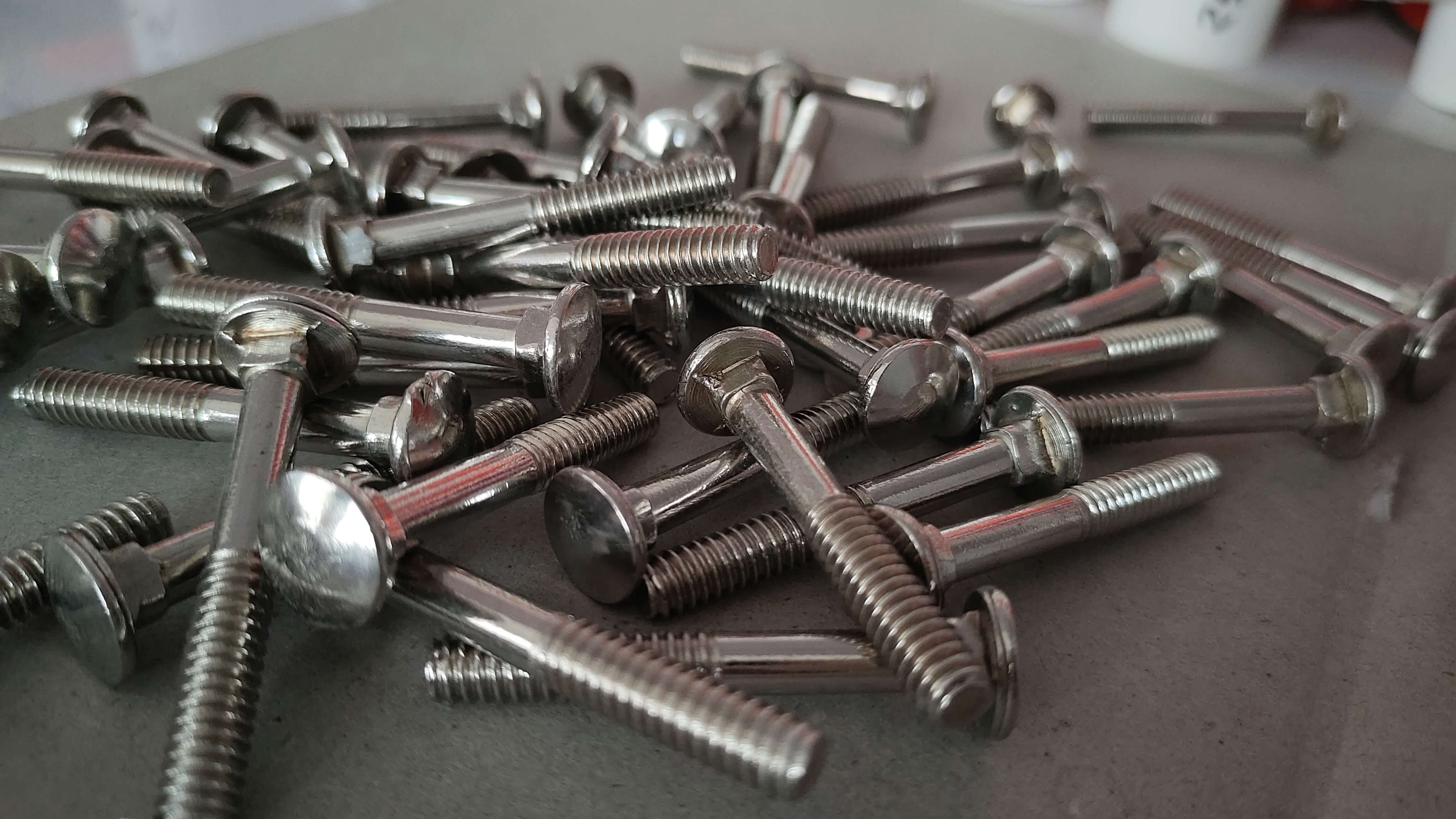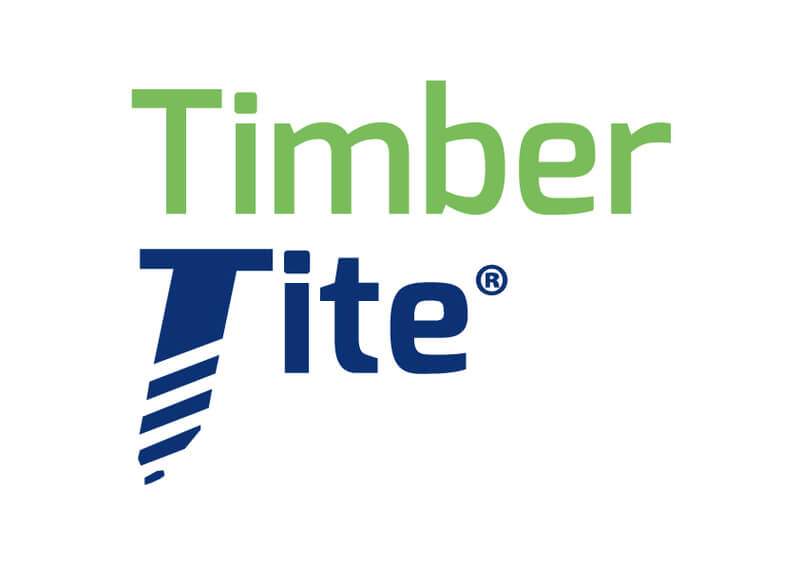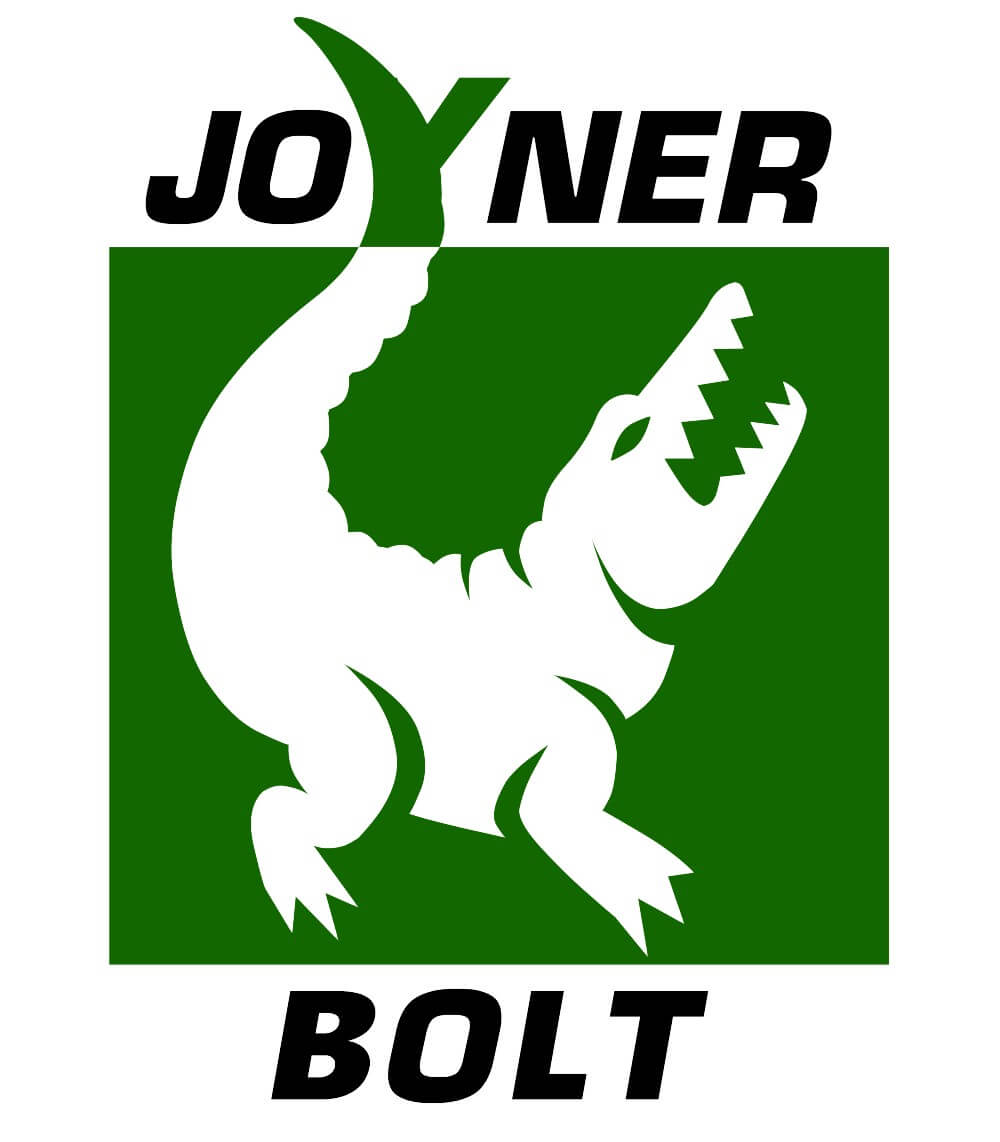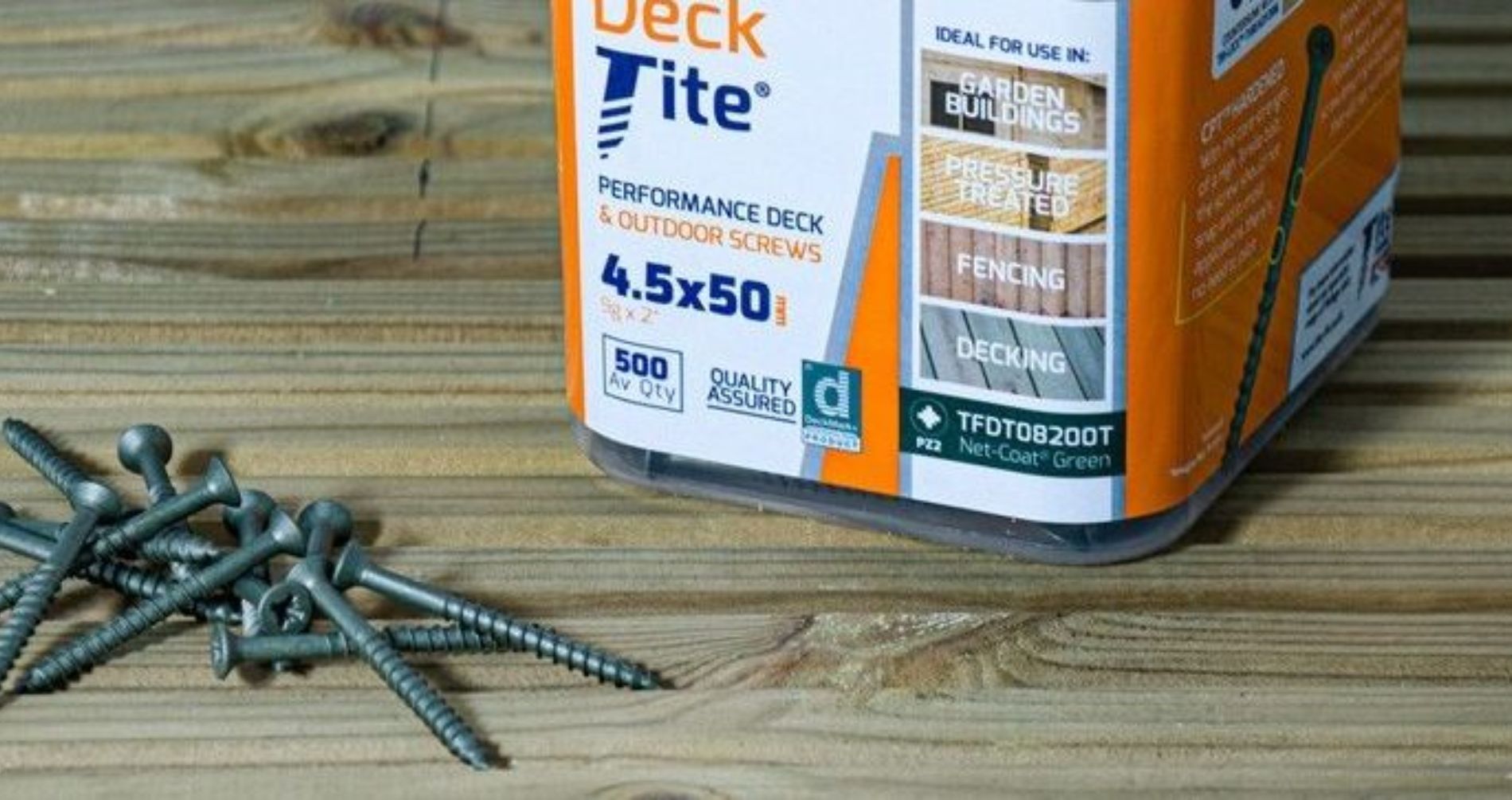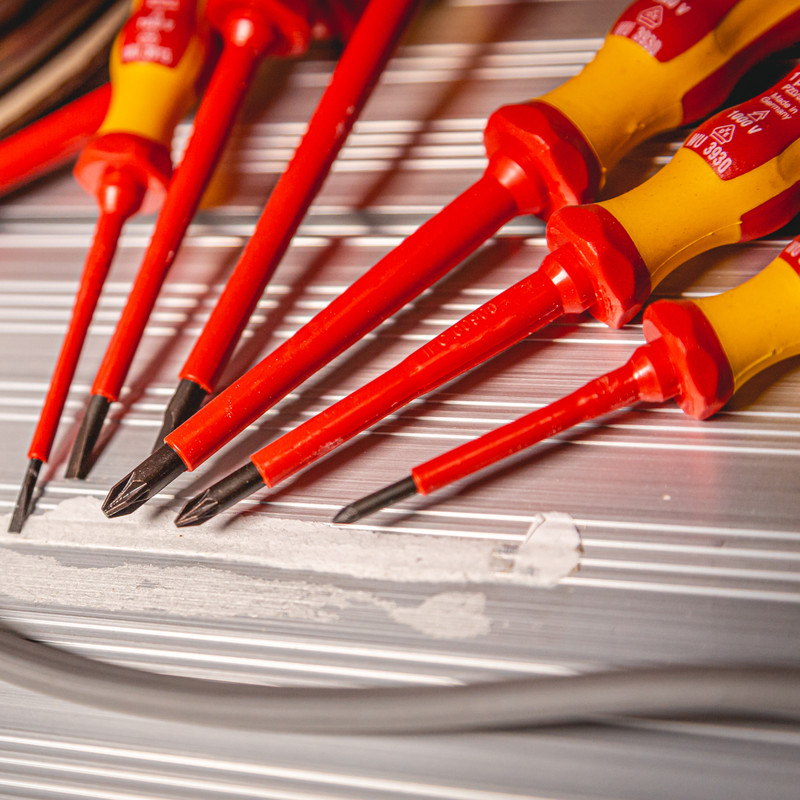Bolts are one of the most common types of fasteners used in a number of industries including construction, machinery, and automotive. Their purpose is to securely join two or more components, yet not all bolts are created equal and with many different types to choose from, the ones you’ll need will depend on the application.
With a wide range of designs, sizes, and materials, selecting the right type of bolt for a specific DIY task is crucial for ensuring strength, durability, and safety.
In this guide, we’ll explore the different types of bolts, each designed with unique features for different uses. From the common hex bolt to the specialised roofing bolt, we’ll break down their uses, variations, and key characteristics to help you make the best choice for your projects.
Different Types of Bolts
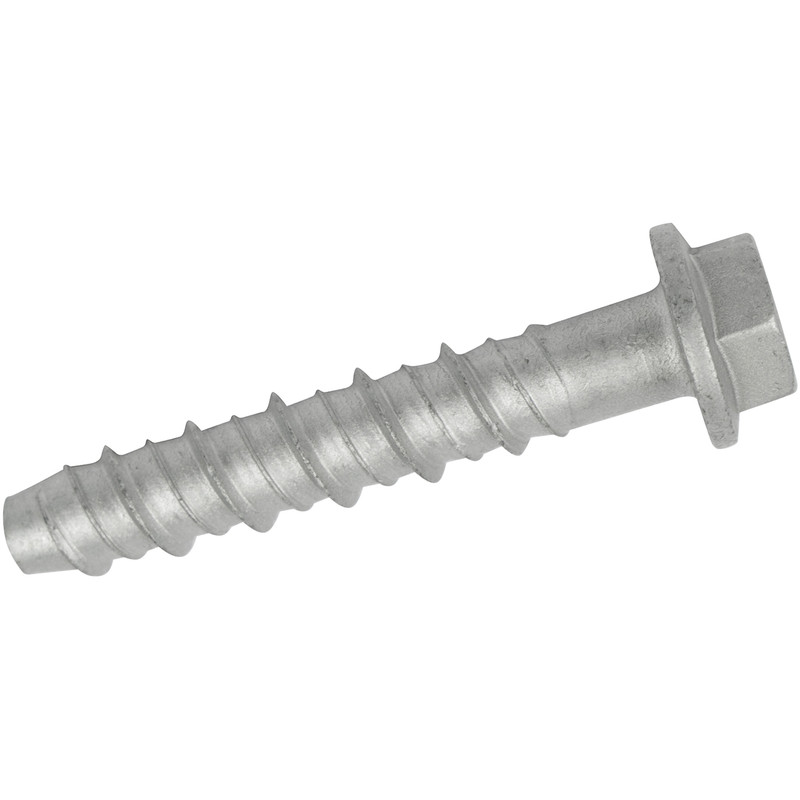
Flange Bolts
A flange bolt is recognised by its built-in, wide, circular flange that sits directly beneath the head of the bolt. The purpose of the flange is to act as a washer eliminating the need for a separate washer, making it more convenient, and saving on the cost of purchasing additional components.
Once the bolt has been positioned, the flange offers an even distribution of pressure across the surface which helps to reduce the risk of damaging the material that’s being fastened, while also adding to the clamping force.
Flange bolts are often used where a traditional washer might be difficult to fit or where additional surface contact is needed. They’re ideal for situations where space is limited or when a high degree of load distribution is required. This makes them a popular choice in automotive manufacturing and assembly of heavy equipment and machinery.
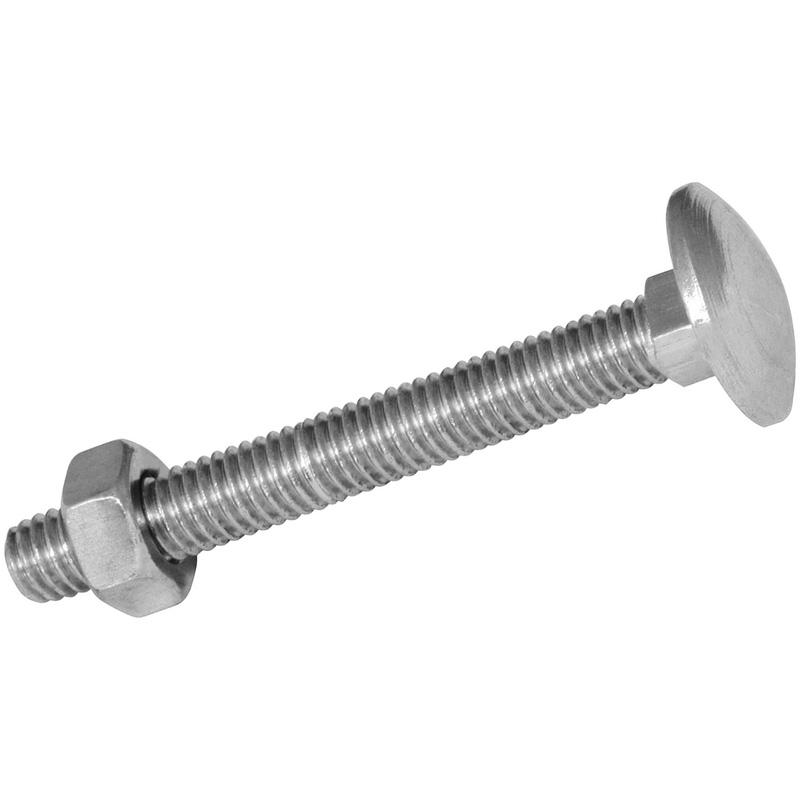
Coach Bolts
A coach bolt, sometimes referred to as a carriage bolt, is a type of fastener designed to be used on wood and metal. It features a smooth, round head with a square section beneath it. The purpose of the square section is to help prevent the bolt from rotating once it’s been inserted into a pre-drilled hole, ensuring a secure and tight fit.
Coach bolts are typically used in applications where the fastener needs to be embedded into the material, whether that’s wood or metal, and often in situations that require strong, durable fastening without the need for a nut on the opposite side.
When it comes to application, coach bolts are widely used in construction and on woodworking projects with common uses including attaching metal brackets to wooden beams and securing larger structures such as gates, sheds or fences. They’re often coated with zinc to resist corrosion which also helps to increase their durability.
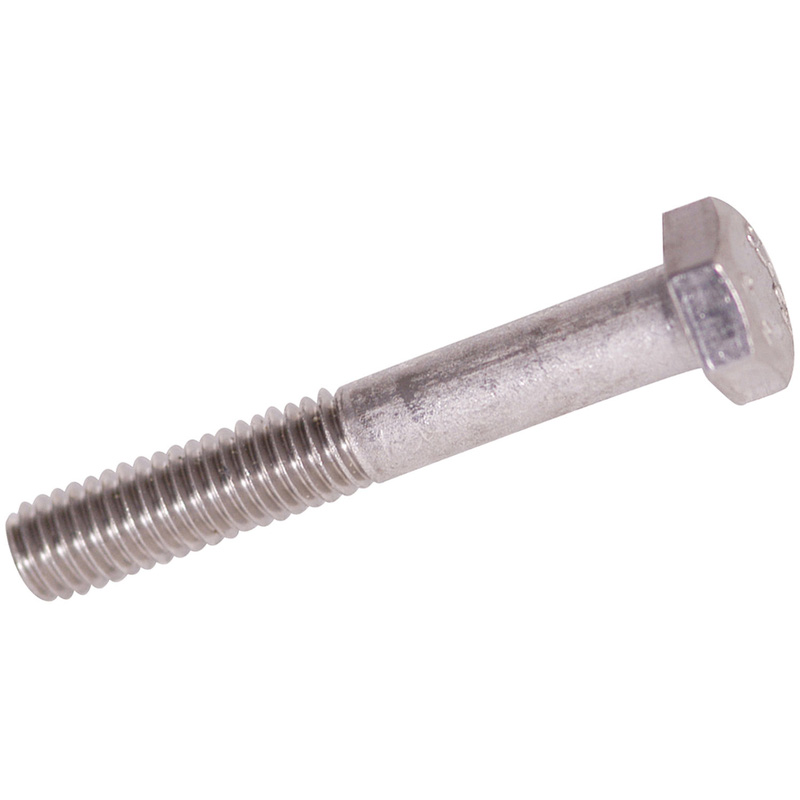
Hex Bolts
A hex bolt, also known as a hexagonal bolt, is one of the most common types of bolts used in construction, machinery, and automotive industries. It’s noted by its six-sided, hexagonal head, which makes it easy to grip with a spanner or socket. They’re designed to be used with a nut or by threading into a pre-tapped hole, providing a strong, secure fastening for a range of materials.
Hex bolts also feature either a partially threaded or fully threaded shaft. For materials that require greater hold you’d opt for a fully threaded bolt which means the thread runs the entire length. Conversely, partially threaded hex bolts should be used with its counterpart nut and washer which fits around the unthreaded area just beneath the bolt head.
Hex bolts are designed to withstand high levels of stress and for that reason are often used in situations that require high strength and durability, such as securing heavy machinery, structural steel connections, or large mechanical assemblies.

Roofing Bolt
As the name implies, a roofing bolt is a type of fastener specifically designed for use in roofing applications and fixes roofing materials, like metal sheets and tiles, to underlying structures such as beams, rafters, or purlins. These bolts are an important component and help to create a strong, weather-resistant seal, ensuring that roofing materials stay in place during adverse weather conditions, such as heavy winds or rainfall.
In terms of appearance, they often feature a large, flat head which helps to distribute equal pressure over a larger surface area, preventing damage to the roofing material. The bolt head usually comes in two different styles; hex head or cross-pan head. Cross pan heads are fixed into place with a Philips screwdriver whereas hex head roofing bolts can be secured with an allen key.
Roofing bolts will require a rubber or neoprene washer (sold separately). These expand beneath the bolt head creating a watertight seal, which prevents water ingress.
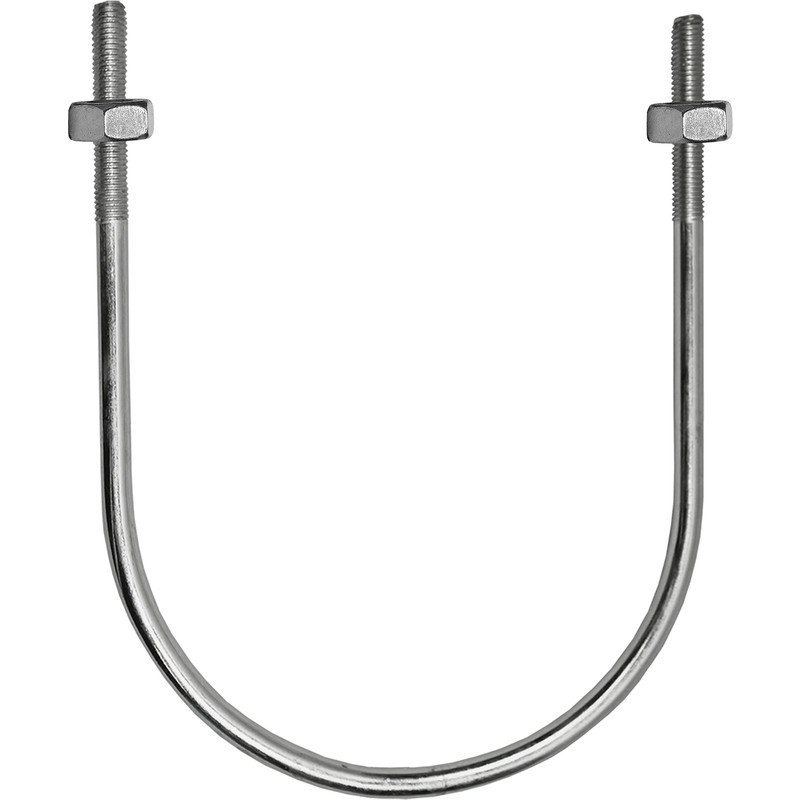
U Bolts
A U-bolt is characterised by its "U" shape appearance and features two threaded ends that can be used to fasten objects securely around circular shapes. The threaded ends mean that U bolts can be fixed with nuts providing a secure grip to a variety of objects. U-bolts are most often used in applications that involve pipes, tubes, or rods, and they’re ideal for fastening these items to a surface or for joining them together.
As with most bolt types, they’re available in a range of sizes, with varying leg lengths and diameters designed to accommodate a host of different applications. You’ll find they’re often manufactured from materials like stainless steel, which makes them more resistant to rust while increasing their longevity.
U-bolts are commonly used for securing pipes to walls, beams, or supports, as well as for mounting and securing various components, such as suspension parts in vehicles or metal framing. They’re also used for attaching round objects, like pipes, to flat surfaces, and for stabilizing components in a wide range of heavy-duty applications.
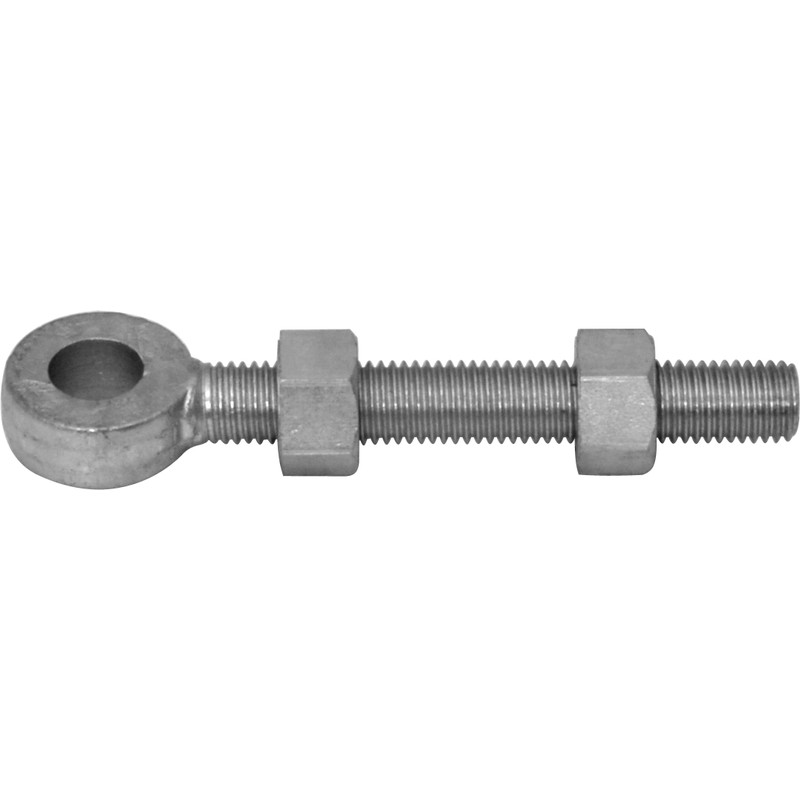
Eye Bolts
An eye bolt is a type of bolt that features a looped, circular "eye" at the head, which allows for easy attachment of things like ropes, chains, and other fastening materials. The eye provides a secure point for lifting, pulling, and securing objects, making them an important component in rigging, lifting, and suspension applications.
They come in a variety of sizes and materials to accommodate different load capacities and environmental conditions. The shaft of the bolt is usually threaded so you can install it securely into a pre-tapped hold or by using a nut to hold it in place.
As eye bolts are used to lift and hoist objects, they’re frequently seen in construction, marine, and industrial settings. They’re commonly used for suspending objects, rigging equipment, or securing loads for transport. Eye bolts are also used in applications that require attaching lifting slings, ropes, or cables, such as lifting heavy machinery, securing boats to docks, or rigging overhead systems in warehouses and factories.
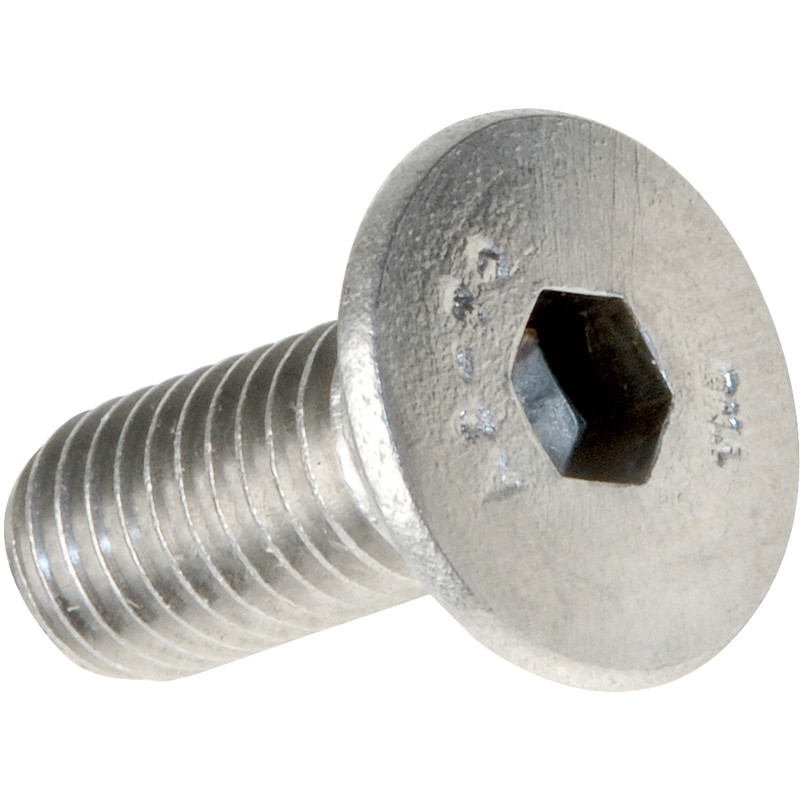
Countersunk Bolts
A countersunk bolt is a type of fastener that’s designed to sit flush with, or slightly below, the surface of the material being fastened. The head of the bolt is slightly tapered so that it matches the shape of the countersunk hole. This allows the bolt to be recessed into the material, and prevents it from protruding.
Countersunk bolts are especially useful in applications where you need to obtain a smooth and even surface. This could be if the bolt needs to be hidden for aesthetic reasons or to prevent interference with other components.
These types of bolts are often used in woodworking and metalworking industries where a flush finish is required. Examples of their use include furniture assembly, cabinetry, or exterior panels on vehicles and machinery. They’re also ideal when there is a need to avoid interference with moving parts or machinery components.
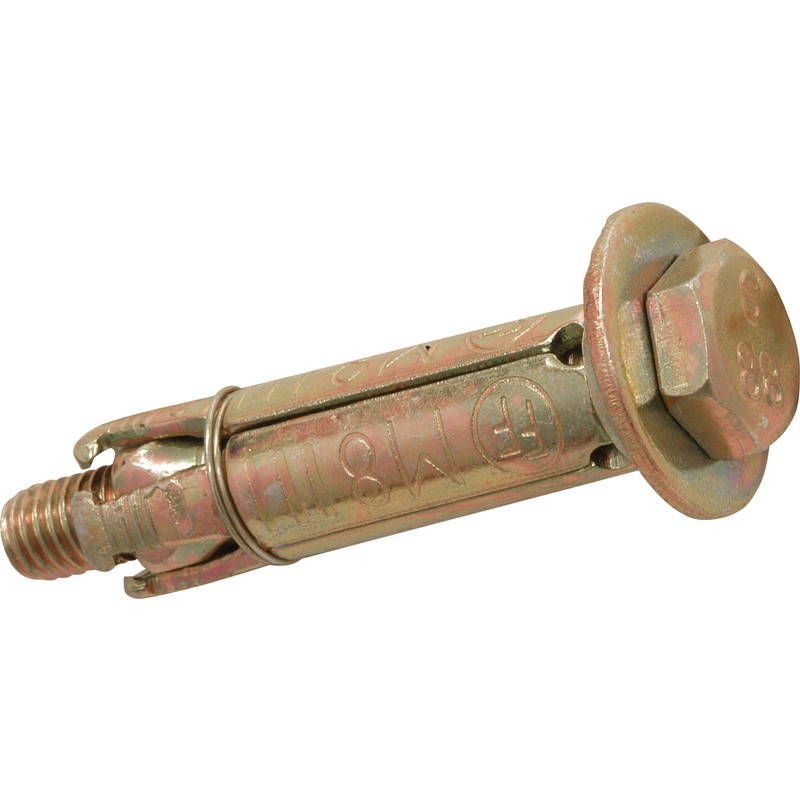
Anchor Bolts
Anchor bolts, sometimes known as shield anchor bolts, are a type of fixing. This means compared to other types of bolts, they offer a more permanent and stable connection. They're incredibly heavy-duty and used when a strong connection is required. There’s also a specific type of anchor bolt, referred to as a loose anchor bolt, which features an easy-to-remove bolt head.
While both types are designed for use in more robust materials, their application is slightly different. Anchor bolts are typically installed directly into the substrate before any fixtures are attached whereas loose anchor bolts tend to have a separate sleeve which is inserted first followed by the bolt, which is screwed in afterwards.
Anchor bolts often have a slotted or partially threaded design making for easy insertion and removal, if and when any adjustments are needed. More common in commercial or industrial environments, they’re used for things like building construction and mounting of large, heavy machinery where they provide a long-lasting and secure fixing.
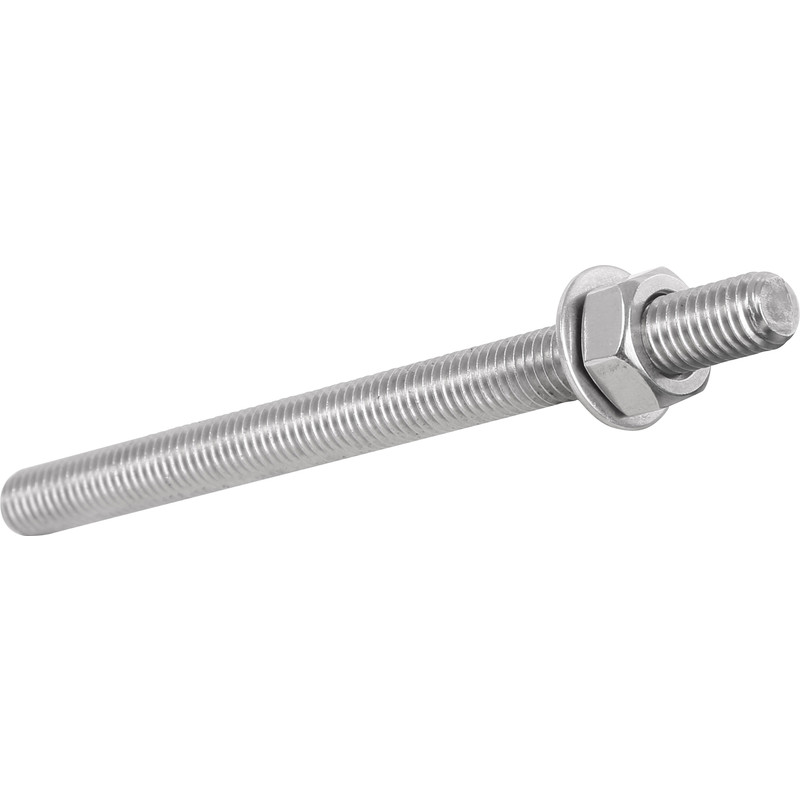
Stud Bolts
A stud bolt, as with an anchor bolt, is a type of fixing and tends to be used when a more permanent solution is required. It consists of a long straight shaft with a thread that often runs the length of the bolt, without a head. Unlike traditional bolts, which have a head and require a nut to be tightened on one side, stud bolts are typically used in pairs, with a nut fastened onto either end.
The design of stud bolts allows for a secure and durable connection, and the lack of a bolt head makes them ideal for confined or hard-to-reach spaces. They’re widely used in industries that require precision, strength, and reliability, such as in mechanical, automotive, and construction applications.
They are often found in machinery, piping systems, engines, and structural assemblies, especially when there is a need to fasten components in awkward or restricted spaces. Common applications include things like securing flanges to piping systems, engine components, and large equipment, where the bolt needs to be tightened from both sides to maintain a high level of pressure resistance.
Key Bolt Features
Tensile Strength
Tensile strength refers to how much force a bolt can withstand before it breaks and is a reflection of the bolts material and its diameter. In other words, a material such as case-harded steel with a larger diameter would have a greater tensile strength. Bolts are typically made from materials like steel or stainless steel, which are engineered to provide high tensile strength for different applications. The higher the tensile strength of a bolt, the more resistant it is to failure under heavy loads.
Coating Finish
Coating finishes, such as galvanized and zinc, are applied to bolts and other fasteners to enhance their durability and resistance to corrosion. Both finishes increase the lifespan of the fasteners, but galvanized coatings tend to offer more robust protection, especially in more extreme conditions. Consider whether the bolts are to be used internally or externally so you choose the right finish.
Thread Pitch
Thread pitch references the distance between each of the peaks of the adjacent threads on a bolt. It’s usually measured in millimeters for metric threads or in threads per inch (TPI) for Unified Thread Standard (UTS) threads. A finer pitch (more threads per unit length) provides a smoother and more precise fit, while a coarser pitch (fewer threads per unit length) allows for quicker assembly and disassembly, offering better grip and resistance to vibration.
Environmental Conditions
In environments where bolts are exposed to rain, humidity, or direct water contact, such as marine, construction, or outdoor applications, corrosion resistance is crucial. Galvanized or stainless steel bolts are often used in these conditions to prevent rust and maintain structural integrity. If rust forms on bolts which are exposed to adverse weather conditions, this can eventually lead to decay which weakens the metal increasing the likelihood of failure.

